Best plants for poor soil are a gardener’s secret weapon, offering vibrant blooms and lush foliage even in challenging environments. While nutrient-deficient, compacted, or poorly drained soil can be a daunting obstacle for many plants, there are resilient species that thrive in these conditions.
These adaptable plants possess unique characteristics that allow them to extract nutrients efficiently, tolerate waterlogging, and withstand harsh conditions.
From drought-tolerant succulents to nitrogen-fixing legumes, a diverse range of plants can transform a seemingly barren landscape into a flourishing oasis. By understanding the challenges posed by poor soil and selecting the right plant species, gardeners can create vibrant and sustainable gardens that flourish despite the limitations.
Understanding Poor Soil

Growing lush and vibrant plants requires more than just sunshine and water. The soil in which your plants grow plays a crucial role in their health and development. Poor soil conditions can significantly hinder plant growth, making it challenging for them to thrive.
Characteristics of Poor Soil
Poor soil conditions are characterized by a lack of essential nutrients, poor drainage, compaction, and an unfavorable pH level. These factors can create an environment that is hostile to plant life.
Low Nutrient Content
Plants require a range of nutrients for healthy growth, including nitrogen, phosphorus, potassium, and micronutrients. Soil with low nutrient content lacks these essential elements, making it difficult for plants to access the resources they need to flourish.
Compacted Soil
Compacted soil is dense and tightly packed, limiting air and water movement. This creates a suffocating environment for roots, hindering their ability to absorb nutrients and water efficiently.
Poor Drainage
Soil that drains poorly holds excessive water, leading to waterlogging. This can suffocate roots, create anaerobic conditions, and increase the risk of root diseases.
High pH
Soil pH measures its acidity or alkalinity. A high pH (alkaline soil) can make certain nutrients unavailable to plants, hindering their growth. For example, iron deficiency is a common problem in alkaline soils.
Challenges Plants Face in Poor Soil
Plants face numerous challenges when growing in poor soil. These include:
- Stunted Growth:Lack of nutrients and water can lead to stunted growth, with plants appearing small and weak.
- Yellowing Leaves (Chlorosis):Nutrient deficiencies, particularly iron deficiency, can cause leaves to turn yellow.
- Wilting:Poor drainage can lead to waterlogging, causing roots to suffocate and the plant to wilt.
- Increased Susceptibility to Diseases:Poor soil conditions can weaken plants, making them more vulnerable to pests and diseases.
- Reduced Yield:Plants growing in poor soil may produce fewer flowers, fruits, or vegetables.
Indicators of Poor Soil
Observing your garden can provide clues about the health of your soil. Here are some common indicators of poor soil:
- Poor Plant Growth:Stunted growth, yellowing leaves, and wilting are all signs that plants are struggling in the soil.
- Excessive Weeds:Weeds often thrive in poor soil, indicating a lack of nutrients and competition for resources.
- Soil Compaction:Hard, compacted soil may be difficult to dig or penetrate with a shovel.
- Poor Drainage:Standing water after rain or watering is a sign of poor drainage.
- Soil Color:Pale, grayish soil often indicates a lack of organic matter, while dark, rich soil is typically healthier.
Adaptable Plant Species
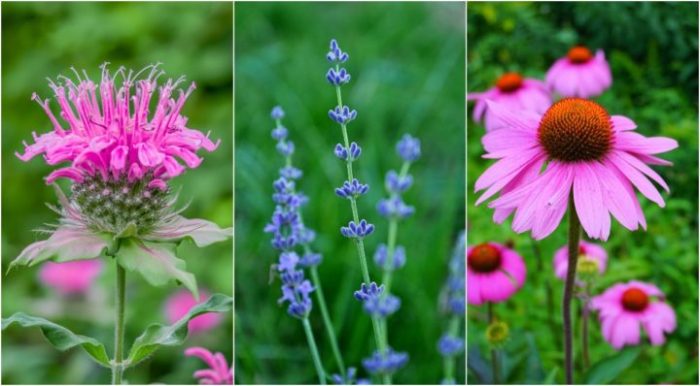
Many plant species have evolved to thrive in poor soil conditions, showcasing remarkable resilience and adaptability. These plants possess unique characteristics that enable them to extract nutrients and moisture from challenging environments, often outperforming their counterparts in more fertile soils.
Plants for Poor Soil Conditions
These plants are known for their ability to thrive in poor soil conditions.
- Grasses: Many grasses, such as fescue, bluegrass, and ryegrass, are known for their tolerance to poor soil conditions. These grasses can tolerate low fertility, drought, and compacted soils, making them ideal for lawns and landscaping in challenging environments.
- Legumes: Legumes, like clover, alfalfa, and beans, are nitrogen-fixing plants. They form symbiotic relationships with nitrogen-fixing bacteria in their roots, allowing them to convert atmospheric nitrogen into a usable form for themselves and other plants. This makes them particularly well-suited for poor soils lacking in nitrogen.
- Wildflowers: Many wildflowers, such as coneflowers, black-eyed Susans, and sunflowers, are naturally adapted to thrive in poor soil conditions. They often prefer well-drained soils with low fertility, adding vibrant color and beauty to challenging landscapes.
- Shrubs: Some shrubs, like blueberries, azaleas, and rhododendrons, prefer acidic soils, which are often low in nutrients. These plants have developed adaptations to extract nutrients from acidic environments, making them suitable for challenging soil conditions.
- Trees: Certain tree species, such as pines, oaks, and maples, are known for their tolerance to poor soil conditions. These trees have deep root systems that can access water and nutrients from deeper layers of the soil, allowing them to thrive in challenging environments.
Characteristics of Plants Adapted to Poor Soil
Plants that thrive in poor soil conditions have developed unique characteristics that allow them to overcome these challenges.
- Deep Root Systems: Plants with deep root systems can access water and nutrients from deeper layers of the soil, where they are often more abundant in poor soil conditions. This allows them to survive periods of drought and nutrient scarcity.
- Nutrient-Efficient Roots: Plants adapted to poor soil often have roots that are highly efficient at absorbing nutrients, even when they are present in low concentrations. This allows them to maximize nutrient uptake from the limited resources available.
- Nitrogen Fixation: Legumes, as mentioned earlier, are nitrogen-fixing plants. They form symbiotic relationships with nitrogen-fixing bacteria in their roots, allowing them to convert atmospheric nitrogen into a usable form. This reduces their reliance on nitrogen in the soil.
- Drought Tolerance: Many plants adapted to poor soil conditions have developed mechanisms to tolerate drought, such as thick cuticles, deep roots, and reduced leaf surface area. These adaptations help them conserve water and survive in dry environments.
- Tolerance to Heavy Metals: Some plants, known as hyperaccumulators, can tolerate and even accumulate high levels of heavy metals in their tissues. This ability makes them valuable for phytoremediation, a process that uses plants to clean up contaminated soil.
Table of Plants for Poor Soil
| Plant Name | Common Name | Soil Type Preference | Key Features |
|---|---|---|---|
| Festuca arundinacea | Tall Fescue | Poor, compacted soil | Drought-tolerant, low-maintenance |
| Trifolium pratense | Red Clover | Poor, nitrogen-deficient soil | Nitrogen-fixing, attracts pollinators |
| Echinacea purpurea | Purple Coneflower | Well-drained, low-fertility soil | Attracts butterflies, drought-tolerant |
| Vaccinium corymbosum | Highbush Blueberry | Acidic, low-fertility soil | Produces edible fruit, attracts birds |
| Pinus strobus | Eastern White Pine | Poor, sandy soil | Tolerates drought, provides shade |
Soil Improvement Techniques
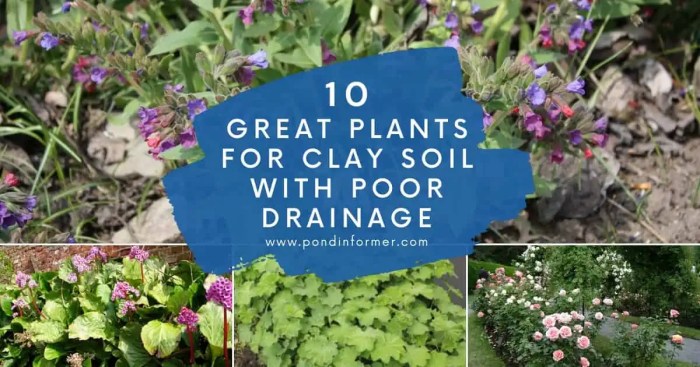
Transforming poor soil into a fertile haven for plants requires a strategic approach that focuses on enhancing soil structure, nutrient availability, and drainage. This involves enriching the soil with organic matter, improving its texture, and promoting a healthy ecosystem.
While you’re busy selecting tough, resilient plants for your poor soil, don’t forget to consider the timing of your pruning. July is a prime month for shaping many shrubs and trees, and you can find a comprehensive list of what to trim in our guide on plants to prune in July.
Once your pruning is done, you’ll be ready to focus on enjoying your thriving, low-maintenance garden, even in challenging soil conditions.
Adding Compost
Compost is a rich, nutrient-dense material derived from decomposing organic matter. It acts as a natural fertilizer, providing essential nutrients like nitrogen, phosphorus, and potassium. Adding compost to poor soil improves its structure, creating air pockets that enhance drainage and aeration.
This allows roots to grow more easily and access nutrients more efficiently.
Amending with Organic Matter
Organic matter, such as compost, manure, leaf mold, and shredded bark, is essential for improving soil quality. It enhances soil structure by increasing water retention and improving drainage. Organic matter also acts as a food source for beneficial microorganisms, which play a vital role in nutrient cycling and decomposition.
Using Cover Crops
Cover crops are plants that are grown to improve soil health. They are typically planted in the off-season or between crop rows. Cover crops add organic matter to the soil, improve its structure, and suppress weeds. Some common cover crops include legumes, grasses, and brassicas.
- Legumes, such as clover and alfalfa, fix nitrogen from the air, enriching the soil with this essential nutrient.
- Grasses, such as rye and oats, help to improve soil structure and prevent erosion.
- Brassicas, such as mustard and radish, break up compacted soil and suppress pests.
Benefits of Soil Improvement
Investing in soil improvement offers long-term benefits for plant health and garden productivity.
When it comes to best plants for poor soil, you’ll want to choose varieties that thrive in tough conditions. Consider adding some fragrant options like lavender or rosemary, which not only tolerate poor soil but also provide a delightful aroma.
For a truly captivating scent, explore the world of plants to make a porch smell nice , where you’ll find a variety of options to enhance your outdoor space. Once you’ve found the perfect fragrant companions, you can rest assured that your porch will be a welcoming haven, even if the soil isn’t ideal.
- Improved drainage: Enhanced soil structure allows for better water infiltration and drainage, reducing the risk of root rot and improving nutrient availability.
- Increased nutrient availability: Organic matter decomposition releases essential nutrients, promoting healthy plant growth and reducing the need for chemical fertilizers.
- Enhanced microbial activity: Healthy soil teems with beneficial microorganisms that break down organic matter, release nutrients, and suppress plant diseases.
- Reduced soil erosion: Improved soil structure and organic matter content increase soil stability, minimizing erosion and preserving valuable topsoil.
Plant Care Considerations
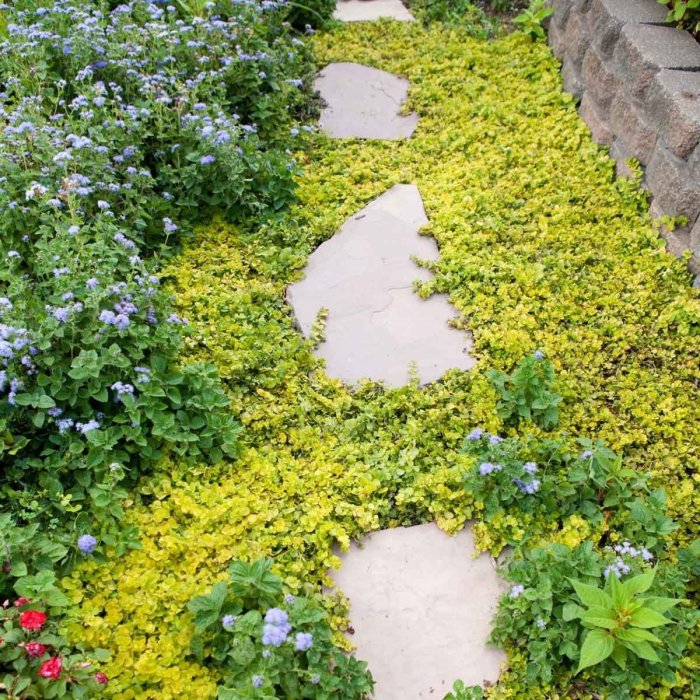
Growing plants in poor soil requires a slightly different approach to plant care. You’ll need to be more attentive to their needs, especially when it comes to watering, fertilizing, and pruning.
Watering Techniques
Watering plants in poor soil is crucial because the soil’s ability to retain moisture is often compromised. To ensure proper hydration, follow these tips:
- Water deeply and infrequently: This encourages deep root growth, allowing plants to access moisture from deeper soil layers. Deep watering also helps improve soil structure over time.
- Check soil moisture: Before watering, insert your finger into the soil. If it feels dry an inch or two below the surface, it’s time to water. Avoid overwatering, as it can lead to root rot.
- Mulch around plants: A layer of organic mulch, such as wood chips or shredded bark, helps retain soil moisture and regulate temperature.
Fertilizing Strategies
Poor soil often lacks essential nutrients, so regular fertilization is crucial. However, over-fertilizing can harm plants, so a balanced approach is key.
- Use slow-release fertilizers: These release nutrients gradually over time, reducing the risk of nutrient burn.
- Conduct soil tests: A soil test will reveal the specific nutrient deficiencies in your soil, allowing you to apply the right fertilizers.
- Apply fertilizer sparingly: Start with a lower concentration than recommended on the packaging and observe the plant’s response. Gradually increase the concentration if needed.
- Consider organic fertilizers: Compost, manure, and other organic materials provide nutrients and improve soil structure over time.
Pruning Practices
Pruning plants growing in poor soil can help them thrive by removing dead or diseased branches and promoting new growth.
- Prune selectively: Remove only dead, diseased, or damaged branches.
- Avoid excessive pruning: Too much pruning can stress plants, especially those already struggling in poor soil.
- Use sharp pruning tools: Clean tools prevent the spread of diseases.
- Prune at the right time: The best time to prune depends on the plant species, but generally, late winter or early spring is ideal for most plants.
Preventing Common Plant Problems, Best plants for poor soil
Poor soil can increase the susceptibility of plants to nutrient deficiencies and diseases. To prevent these problems, follow these guidelines:
- Monitor plants closely: Observe your plants for signs of nutrient deficiencies, such as yellowing leaves, stunted growth, or wilting.
- Provide adequate drainage: Poor soil often drains poorly, increasing the risk of root rot. Ensure proper drainage by amending the soil with organic matter and creating raised beds if necessary.
- Choose disease-resistant varieties: Select plants that are known to be resistant to common diseases in your area.
- Avoid overwatering: Overwatering can create favorable conditions for fungal diseases.
Importance of Regular Monitoring
Regular monitoring of your plants is essential, especially when they are growing in poor soil. By observing their growth, leaf color, and overall health, you can quickly identify any problems and adjust your care practices accordingly.
- Observe for changes: Monitor your plants for any changes in their appearance or growth patterns.
- Adjust care practices: Based on your observations, adjust watering, fertilizing, and pruning techniques as needed.
- Consult resources: If you notice any unusual problems, consult a gardening expert or online resources for advice.
Inspiring Garden Design
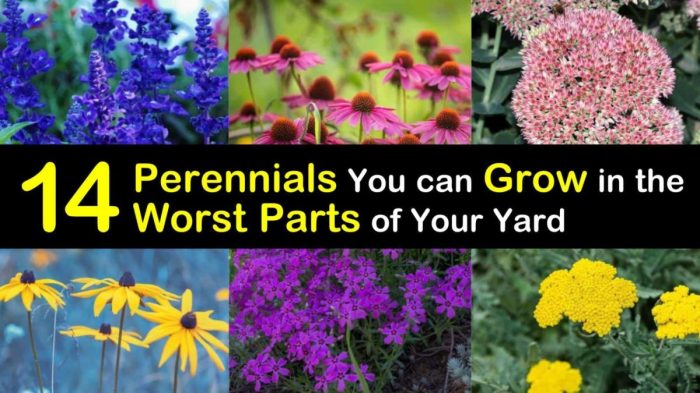
A garden designed for poor soil can be just as beautiful and bountiful as one with ideal conditions. The key is to choose plants that thrive in challenging environments and to incorporate design elements that complement their unique characteristics.
Designing for Poor Soil
A well-designed garden for poor soil can be a vibrant and captivating space. Consider a garden with a layered effect, where different heights and textures create visual interest. Imagine a backdrop of tall, drought-tolerant grasses like Miscanthus sinensis, their feathery plumes swaying gently in the breeze.
In front of them, clusters of low-growing, colorful wildflowers like Coreopsis and Echinacea create a burst of color. A winding path of stepping stones meanders through the garden, leading the eye to a focal pointa weathered stone sculpture or a charming bird bath.
This design not only utilizes plants that thrive in poor soil but also creates a sense of depth and intrigue.
Challenges and Solutions
Creating a thriving garden in poor soil presents unique challenges. The lack of nutrients and water retention can hinder plant growth and vitality. However, there are effective solutions.
- Improving Soil Structure:Incorporating organic matter, such as compost or leaf mold, can improve soil structure, enhancing drainage and aeration. This allows roots to grow more readily and access nutrients more efficiently.
- Choosing the Right Plants:Selecting plants that are naturally adapted to poor soil conditions is crucial. Native plants are often a good choice, as they have evolved to thrive in the local environment. Examples include Black-Eyed Susan (Rudbeckia hirta), Yarrow (Achillea millefolium), and Purple Coneflower (Echinacea purpurea).
- Mulching:Applying a layer of mulch, such as wood chips or shredded bark, helps retain moisture, suppress weeds, and improve soil health over time.
- Strategic Watering:Deep watering, less frequently, is more beneficial than shallow watering, as it encourages roots to grow deeper and access moisture more effectively.
Summary: Best Plants For Poor Soil
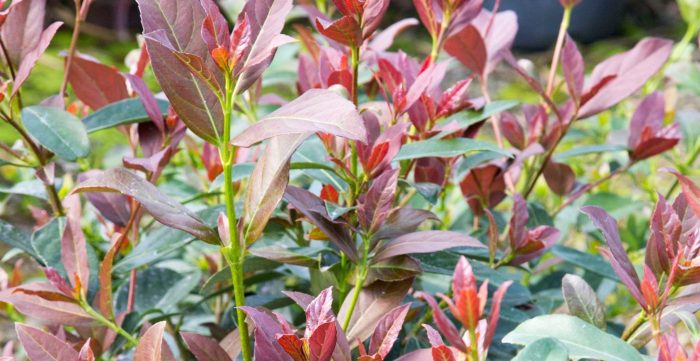
Cultivating a thriving garden in poor soil is a testament to the power of adaptation and resilience. By choosing the right plants, improving soil quality, and providing appropriate care, gardeners can transform seemingly barren landscapes into vibrant and sustainable oases.
The rewards of nurturing life in challenging conditions are abundant, offering not only a beautiful garden but also a sense of accomplishment and connection to the natural world.